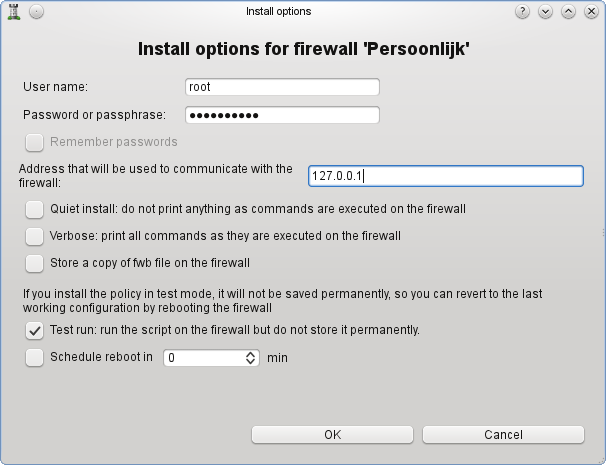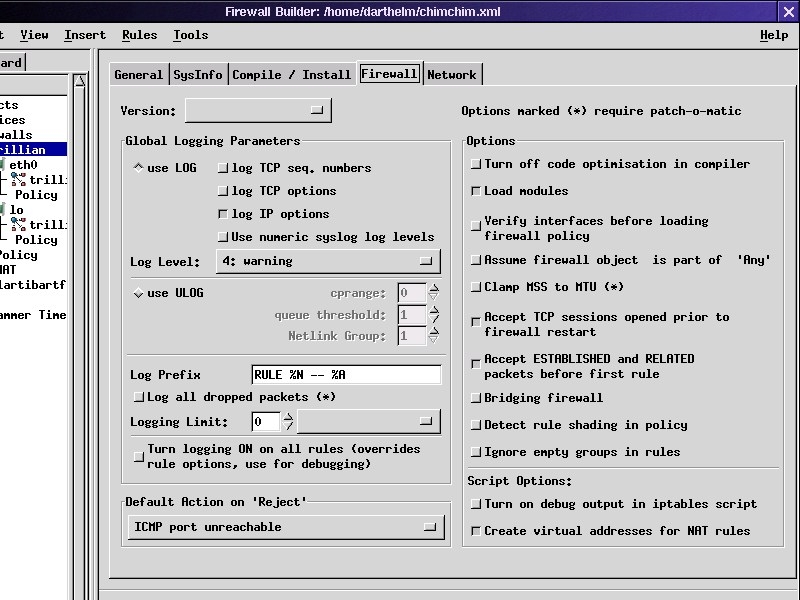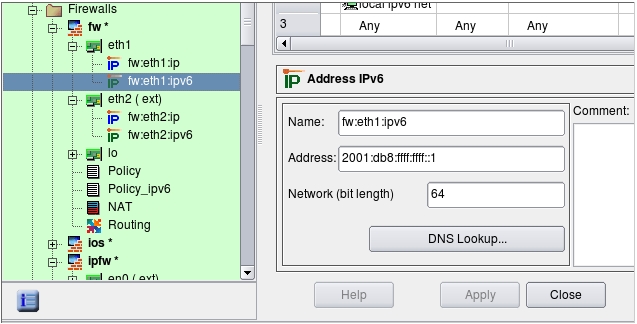

- FIREWALL BUILDER FOR LINUX INSTALL
- FIREWALL BUILDER FOR LINUX SOFTWARE
- FIREWALL BUILDER FOR LINUX DOWNLOAD
- FIREWALL BUILDER FOR LINUX FREE
Our last recommendation is the very firewall that is already built into every Linux system – iptables or nftables.

Like Shorewall, it mostly configures everything into different “zones.” It is capable of setting up complex rules that would normally be much more complicated to manually implement directly into nftables. It makes configuration a bit easier than working directly with iptables or nftables. It is the default firewall for Red Hat and its derivative distributions. System administrators that like simple and minimalistic configuration will find Shorewall to be an attractive solution.įirewalld is a front end for nftables on Linux. It works with zones and simple text files, making it unique from the other choices in our list. Shorewall can be installed directly to the computer you want it to protect, or on a separate device before your DMZ. This is an easy one to get set up and started with, if you feel like other dedicated hardware solutions are too complicated or just overkill for your network.
FIREWALL BUILDER FOR LINUX INSTALL
You can even install it on a Raspberry Pi. It features many advanced capabilities but can run on minimum hardware. IPFire runs on dedicated hardware like OPNsense and pfSense, but uses Linux instead of BSD.

To make it even simpler, you can install gufw, which is a graphical interface for ufw. It is the default firewall on Ubuntu and Manjaro. ufw makes the management of firewall rules much easier and less… well, complicated. The uncomplicated firewall (ufw) is a front end for the embedded iptables firewall built into every Linux system.
FIREWALL BUILDER FOR LINUX FREE
It has been around for a long time and has a good reputation, so you can find a lot of free support online, as well as paid commercial support in case you need extra help. PfSense is another firewall solution that needs dedicated hardware. Complicated for a normal user to implement.Robust options like VPN, load balancing, and traffic shaping.Easier configuration than its predecessor (pfSense).The idea is that traffic must pass through OPNsense’s filters before being able to access the rest of the devices on your network. You need to have OPNsense on a separate device that sits between your router and the rest of your network. This is a firewall that runs on dedicated hardware, so it will not be a suitable recommendation to typical users. OPNsense is a robust firewall that was forked from pfSense – an established, respected firewall – back in 2015. There are a lot of choices in addition to the ones below, but these are some of our favorites.
FIREWALL BUILDER FOR LINUX DOWNLOAD
Keep in mind that it is not always necessary to download any extra software, since Linux already comes with iptables/nftables baked in – and this is one of our recommendations as you will see below. Here are some of our top picks for Linux firewalls. $ – requires given linux commands to be executed as a regular non-privileged user # – requires given linux commands to be executed with root privileges either directly as a root user or by use of sudo command Privileged access to your Linux system as root or via the sudo command. Opnsense, pfsense, ufw / gufw, ipfire, shorewall, firewalld, iptables / nftables
FIREWALL BUILDER FOR LINUX SOFTWARE
Requirements, Conventions or Software Version Used You will see a few choices below to help steer you in the right direction to pick a firewall that best suits your needs.īest firewall for Linux Software Requirements and Linux Command Line Conventions Category Of course, corporations or large networks will need a very different firewall solution than a typical end user. The one you pick will largely depend on your goals for securing your network. In this tutorial, we have compiled a list of our top picks for the best firewalls available on Linux. Any user can configure their system firewall to get started with securing network traffic, but there are many alternatives to the default which will extend or simplify the functionality. All major Linux distros come with a software firewall built into them, since it is part of the Linux kernel itself. A firewall is a line of defense on your network, primarily used to filter incoming traffic, but also used for outbound rules and other network related security.


 0 kommentar(er)
0 kommentar(er)
